
Insects & Bugs
-
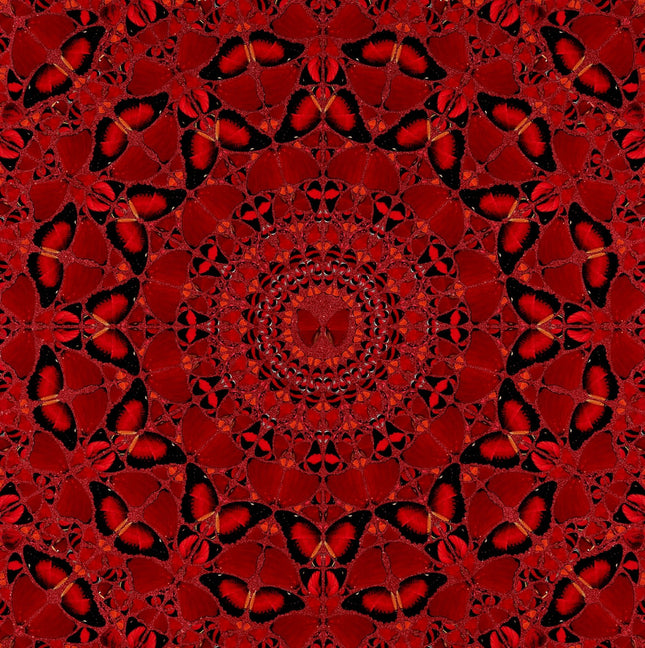
Damien Hirst The Empresses- H10-4 Suiko Aluminum Giclee by Damien Hirst
The Empresses- H10-4 Suiko Pop Street Artwork Limited Edition Giclee & Giltter Screenprint Print on Aluminum Sheet by Urban Graffiti Modern Artist Damien Hirst. 2022 Signed & Numbered In Verso on Label Limited Edition of 3310 Artwork Size 39.37x39.37 Giclee & Giltter Screenprint Print on Aluminum Sheet Empress Suiko's Legacy Through Damien Hirst's Vision Suiko, a captivating composition, embodies the essence of life in numerous ways and is named after Japan's first documented empress. Although folklore suggests that several women had ruled before Empress Suiko (554-628 CE), her ascension to power following the assassination of her brother Sushun in 592 CE challenged the tradition of male rulership. Suiko is recognized for the Chinese and Korean influences she introduced to Japan, such as the adoption of the Chinese calendar, the arrival of Chinese and Korean artisans, and, most notably, the establishment of Buddhism. In the artwork, variously sized paired wings radiate from the center, forming a symmetrical, concentric circle that mirrors Buddhist symbolism and life cycle. This circular pattern is strikingly accentuated by shimmering diagonal red lines that extend from the center to each corner. Set against a red backdrop, these lines intersect the pairs of detached wings, seemingly passing through where the bodies once resided. As with every piece in this series, Suiko presents a continuous metamorphosis, with the butterflies appearing to move and evolve the longer one observes the work. While the details are best appreciated up close, the composition assumes a new vitality from a distance. From this perspective, Suiko unveils a swelling configuration of wings, organized around the central concentric circles and enhanced by additional external wing arrangements. This composition resembles biological or molecular structures reminiscent of the living organisms it portrays. 'The Empresses - H10-4 Suiko' is a profound piece of street pop art by Damien Hirst, a renowned British artist whose works often delve into themes of life, death, and beyond. This artwork is a giclee and glitter screenprint on an aluminum sheet, encapsulating the historical significance and spiritual depth of Empress Suiko, Japan's first documented empress. The piece, signed and numbered by Hirst, embodies Empress Suiko's transformative impact on Japanese society by integrating Chinese and Korean cultural elements and establishing Buddhism as a foundational spiritual practice. Spiritual Symbolism in 'The Empresses - H10-4 Suiko' The artwork mesmerizes with concentric circles of butterfly wings, evoking Buddhist symbolism and the concept of life's cyclical nature. Each pair of precisely placed wings creates a sense of harmony and balance, reflecting the orderly universe Suiko sought to establish through her reforms. The shimmering diagonal lines traversing the composition echo the Buddhist paths of enlightenment, leading from the tumultuous human experience to the serenity of Nirvana. Hirst uses these lines to draw connections between the spiritual journey and the temporal power wielded by Empress Suiko, who navigated the intricacies of court politics with a vision of peace and progress. Set against a vibrant red backdrop, the wings' arrangement transcends mere aesthetic appeal, inviting contemplation of life's transient beauty and the spirit's enduring nature. This duality aligns with the principles of Buddhism, which Suiko championed. This faith acknowledges the fleeting beauty of the physical world while urging the pursuit of more profound, lasting truths. A Metamorphosis of Art and History Observing 'The Empresses - H10-4 Suiko', one experiences a metamorphosis that mirrors the transformative era of Suiko's reign. The continuous evolution of the artwork, where butterflies symbolize change and rebirth, speaks to the empress's role in reshaping Japan's cultural and religious landscape. From a distance, the composition pulses with life, the concentric circles expanding outward, reminiscent of Suiko's policies' rippling effect across her empire and through time. The biological and molecular resemblances in the arrangement of the wings suggest the interconnectedness of all living things, a concept at the heart of Buddhist teaching. Hirst's masterful integration of historical narrative with contemporary art challenges the viewer to consider how the past informs the present and how figures like Empress Suiko continue to influence modern thought and art. In 'The Empresses - H10-4 Suiko', Damien Hirst offers more than just a visual spectacle; he presents a philosophical inquiry wrapped in street pop art and graffiti artwork. This piece is a testament to Hirst's ability to weave together the threads of history, spirituality, and contemporary art into a tapestry that captures the imagination and prompts introspection. Empress Suiko's legacy, as interpreted through Hirst's artistic vision, becomes a bridge connecting the ancient to the modern, the spiritual to the secular, and the individual to the universal.
$7,146.00
-
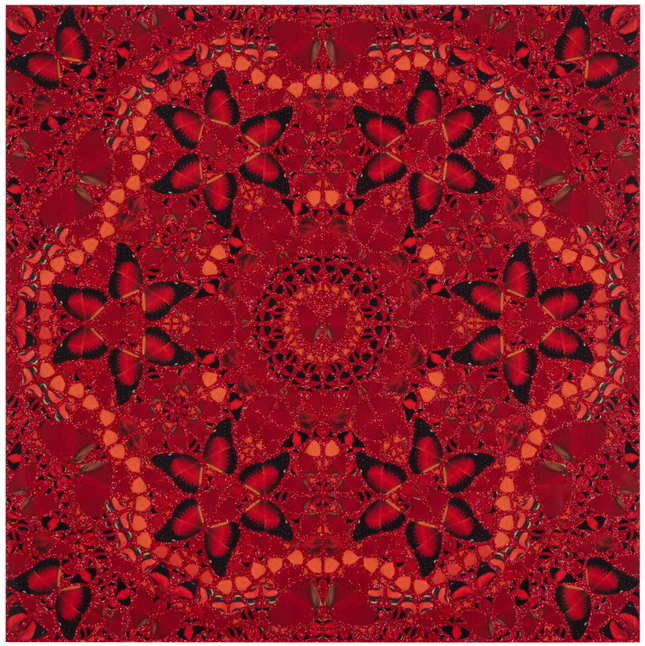
Damien Hirst The Empresses- H10-1 Wu Zetian Aluminum Giclee by Damien Hirst
The Empresses- H10-1 Wu Zetian Pop Street Artwork Limited Edition Giclee & Giltter Screenprint Print on Aluminum Sheet by Urban Graffiti Modern Artist Damien Hirst. 2022 Signed & Numbered In Verso on Label Limited Edition of 2853 Artwork Size 39.37x39.37 Giclee & Giltter Screenprint Print on Aluminum Sheet The Butterfly Effect in Street Pop Art: 'The Empresses - H10-1 Wu Zetian' In the landscape of street pop art, the works of Damien Hirst stand as monumental achievements that merge historical reverence with modern artistic practices. One such work, 'The Empresses - H10-1 Wu Zetian' by Hirst, is a splendid example of how contemporary art can pay homage to historical figures while employing modern techniques and mediums. This limited edition artwork, signed and numbered by Hirst, is a collector's piece and a profound visual narrative that encapsulates the essence of Wu Zetian's rule. At the core of 'Wu Zetian,' a vibrant artwork inspired by the cunning and effective Chinese ruler, lies a unique arrangement of butterfly wings. Wu Zetian (624-705 CE) ascended to power as empress in 655 CE when she married Emperor Gaozong. Her reign witnessed brutal eliminations of political opponents but also stabilized the Tang Dynasty during a critical period. The central element of the piece is a solitary set of butterfly wings encircled by pairs of wings, forming a striking and symmetrical hexagonal pattern. The composition emphasizes the number six, a recurring symbol of good fortune in Chinese culture. Additionally, the hexagon symbolizes the six directions (North, South, East, West, Heaven, and Earth), signifying completeness, harmony, and balance. These notions reflect Wu Zetian's rule, marked by her intelligence, courage, and firm decision-making. Elaborate red-winged butterfly arrangements fill the canvas's four corners, featuring a seamless interplay between singular and paired wings. This complex composition lends an alluring dynamism to the artwork, creating an impression of perpetual change and imbuing the butterflies with a lifelike sense of movement. 'Nūr Jahān' is another artwork featuring intricate patterns of single or paired butterfly wings rendered in stunning red and black hues. The symmetrical designs radiate from the center, forming mesmerizing, kaleidoscopic patterns. At the composition's heart lies a focal square that encloses the central set of wings, drawing the viewer's eye inward. This refined configuration echoes the architectural mastery of Nūr Jahān and the exquisite mosaic tiles adorning the Agra tomb. A continuous metamorphosis characterizes the arrangement of 'Nūr Jahān.' As viewers observe the artwork and shift their position, they uncover new sequences of extraordinary wing patterns. The large black and red pairs encircling the composition create a distinctive, uneven frame. This imbues the structured composition with energy and vitality, capturing the butterflies in a moment of multidirectional flight. Symmetry, Significance, and Symbolism At the heart of 'The Empresses - H10-1 Wu Zetian', viewers are enveloped in a spectacle of symmetry and symbolism. Damien Hirst, an English artist whose work has often sparked dialogue within the art community, crafts a visual representation of Wu Zetian, the only female emperor in Chinese history. The artwork is meticulously constructed with butterfly wings arranged to form a hexagonal pattern, a shape deeply rooted in Chinese symbolism. The hexagon represents the harmonious union of the six directions, embodying Wu Zetian's strategic prowess and the balance she maintained during her reign. The solitary set of wings at the center of the piece may signify Wu Zetian herself, surrounded by the intrigues and courtiers that defined her rule. The intricate patterns of single and paired wings, rendered in striking red hues, resonate with power, passion, and transformation themes. Red, a color of great importance in Chinese culture, symbolizes good fortune and joy, which intricately ties the aesthetic choice to the cultural context of the artwork. Artistic Techniques and Contemporary Interpretations Damien Hirst's choice of medium—giclee and glitter screenprint on an aluminum sheet—further enhances the luminosity and texture of the work, allowing the intricate details and reflective qualities to shine. This choice aligns with his fascination with unconventional materials and methods, a hallmark of his approach to art. The aluminum surface lends the piece a contemporary edge, aligning with the ethos of street pop art, where traditional graffiti has evolved into a sophisticated form of artistic expression. The artwork's technique and composition invite an interactive experience. As the viewer's perspective shifts, so does the appearance of the wings, suggesting the fluidity of power and the fleeting nature of life, themes that were all too familiar to Wu Zetian as she navigated the treacherous waters of political intrigue. The work's dynamic nature reflects the constant motion and change inherent in street pop and graffiti artwork, where the context and environment play crucial roles in interpreting the art. In synthesizing the historical narrative of Wu Zetian with the transformative medium of street pop art, Hirst allows for a contemporary reimagining of a figure who shaped history. This piece does not merely represent a figure from the past; it brings her into the present, allowing for reflection and discourse on the nature of power, the role of women in history, and the enduring impact of a legacy left behind centuries ago. Through 'The Empresses - H10-1 Wu Zetian', Hirst contributes to the narrative of street pop art. This genre continues to redefine itself and expand the parameters of what art can communicate and commemorate.
$7,146.00
-
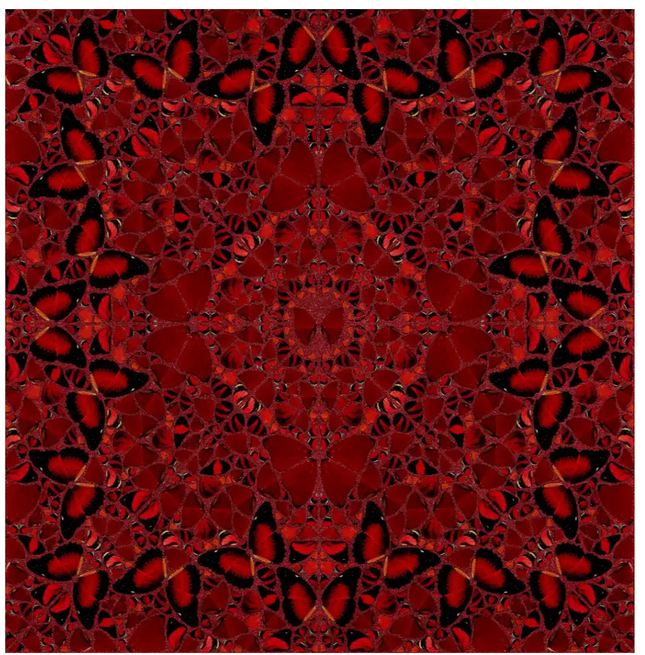
Damien Hirst The Empresses- H10-2 Nūr Jahān Aluminum Giclee by Damien Hirst
The Empresses- H10-2 Nūr Jahān Pop Street Artwork Limited Edition Giclee & Giltter Screenprint Print on Aluminum Sheet by Urban Graffiti Modern Artist Damien Hirst. 2022 Signed & Numbered In Verso on Label Limited Edition of 3041 Artwork Size 39.37x39.37 Giclee & Giltter Screenprint Print on Aluminum Sheet Decoding the Vivacity of 'The Empresses - H10-2 Nūr Jahān' Drawing inspiration from the multifaceted Mughal empress, Nūr Jahān (1577-1645), the artwork embodies her diverse talents and influence. Though she became Emperor Jahāngīr's 20th wife in 1611, she was never officially an empress. Despite this, Nūr Jahān demonstrated her power by minting coins and issuing royal decrees. Adept in diplomacy, hunting, and advising, she was also a gifted architect. Her design contributions to her parents' tomb in Agra are thought to have inspired the iconic Taj Mahal. The "Nūr Jahān" piece showcases intricately symmetrical patterns of single and paired wings in vivid shades of red and black. These wings radiate from the center, extending vertically, horizontally, and diagonally to form mesmerizing kaleidoscopic designs. The central square highlights the principal pair of wings, while the surrounding patterns seem to recede, drawing the viewer's attention to the center. This meticulous, layered composition echoes Nūr Jahān's architectural prowess, and the magnificent mosaic tiles grace the Agra tomb. As one contemplates "Nūr Jahān," the artwork transforms continuously, unveiling new sequences of extraordinary wing patterns as the viewer's perspective shifts. This is especially evident with the large black and red wing pairs that encircle the composition's outer edges, arranged in an irregular frame. Through this technique, the artist instills a sense of dynamism and life in the otherwise orderly composition, capturing the essence of the butterflies in various stages of flight, much like the diverse nature of the empress herself. In street pop art, Damien Hirst's 'The Empresses - H10-2 Nūr Jahān' stands as a riveting homage to the influential and unofficial empress of the Mughal empire. This giclee and glitter screenprint on aluminum captures the essence of Nūr Jahān's multifaceted life, depicting the vibrancy and depth of her character through a symphony of red and black butterfly wings. Born as the urban graffiti modern artist Damien Hirst, the British artist's creation is a limited edition piece, signed and numbered as a testament to its exclusivity and importance in contemporary art. The Artistic Symphony of Wings and Influence The artwork's composition, featuring meticulously arranged butterfly wings, is a testament to Nūr Jahān's architectural acumen and her role in shaping Mughal aesthetics. The central square structure, highlighted by the principal pair of wings, draws the viewer's gaze inward, like the entrance to an intricately designed Mughal structure. The wings, extending in all directions, create an effect of perpetual motion, symbolizing Nūr Jahān's dynamic presence in a male-dominated court. The choice of colors, red and black, is striking and purposeful, evoking the power and determination that Nūr Jahān wielded as she navigated the intricacies of Mughal politics and culture. The layered patterns that recede from the center mimic the complexity and depth of Nūr Jahān's influence on Mughal architecture, such as the exquisite tile work of her parents' tomb in Agra. It is a visual narrative that mirrors the empress's life – a constant oscillation between the foreground and the background, between being seen and unseen, much like the varying visibility of the butterfly wings, depending on the viewer's standpoint. A Dynamic Reflection of a Multifaceted Empress Damien Hirst's 'The Empresses - H10-2 Nūr Jahān' is an artistic endeavor and an immersive experience. The artwork unfolds new patterns as the viewer moves, reflecting the ever-changing nature of existence and perception. This transformative aspect of the piece resonates with the transformative era of Nūr Jahān's influence, where she redefined the role of women in leadership and left an indelible mark on her time's cultural and architectural landscape. The outer edges of the composition, with the large wing pairs arranged in an irregular frame, impart a sense of vitality and movement, much like the empress known for her hunting prowess and diplomatic skills. This technique employed by Hirst infuses life into the structured composition, creating a sense of multidirectional flight and reflecting the empress's omnipresence in the various facets of Mughal governance and culture. Through this limited edition street pop art and graffiti artwork, Damien Hirst encapsulates the spirit of Nūr Jahān, presenting her not merely as a historical figure but as an emblem of power, creativity, and resilience. The piece stands as a modern tribute to her life, inspiring contemporary viewers to explore and appreciate the rich tapestry of history through the lens of street pop art.
$7,146.00
-
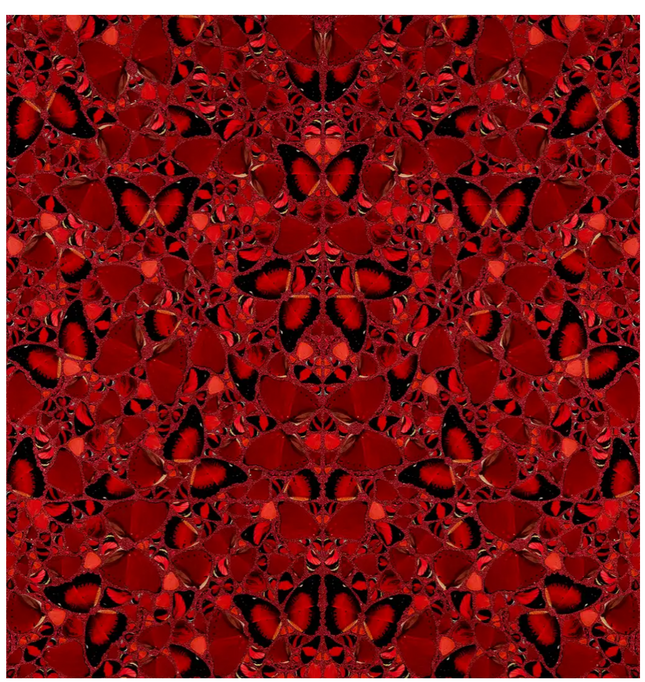
Damien Hirst The Empresses- H10-3 Theodora Aluminum Giclee by Damien Hirst
The Empresses- H10-3 Theodora Pop Street Artwork Limited Edition Giclee & Giltter Screenprint Print on Aluminum Sheet by Urban Graffiti Modern Artist Damien Hirst. 2022 Signed & Numbered In Verso on Label Limited Edition of 3315 Artwork Size 39.37x39.37 Giclee & Giltter Screenprint Print on Aluminum Sheet Exploring 'The Empresses - H10-3 Theodora': A Fusion of History and Modernity Incredibly intricate and dynamic, 'Theodora' pays homage to the influential Byzantine empress who used her intellect and understanding to bring about enduring transformation within the empire. Born to the most humble class in Byzantine society, Theodora (497-548 CE) ascended to power in 527 CE after marrying Emperor Justinian. She made a lasting impact on the region, primarily by enacting new religious and social policies. Theodora's influence over the empire led many to question whether she, rather than Justinian, held the reins. In 'Theodora,' an absorbing asymmetrical pattern is formed from red and black butterfly wings, making it the only piece in the series. Shimmering red lines, visible only up close, bisect the composition vertically and horizontally, dividing it into halves and thirds and forming a circle in the upper portion. The lower horizontal band, the circle, and the vertical line stand out most prominently, evoking the female gender symbol. This symbolism harks back to some of Theodora's groundbreaking policies that improved the lives of women, such as banning the trafficking of young girls and revising divorce laws to grant women greater rights. 'Theodora' distinguishes itself through its orchestrated disorder, with wings positioned individually or in pairs throughout the piece. The meticulous asymmetrical arrangement generates the visual impression that these wings are not inert specimens displayed for the viewer's delight but rather living creatures pulsating with energy, caught in motion as they traverse (and seemingly beyond) the depicted space. The piece 'The Empresses - H10-3 Theodora' is a striking example of how street pop art and graffiti artwork can encapsulate the essence of historical figures through the lens of contemporary art. Damien Hirst, an artist renowned for his urban graffiti and modern artistic approaches, crafts a narrative around Theodora, the influential Byzantine empress known for her intelligence and legislative impact. This limited edition artwork, part of a series that honors powerful women from history, stands out for its use of giclee and glitter screenprint on aluminum, a signature technique of Hirst's that combines traditional artistry with a modern substrate. Visual Symbolism and Asymmetry in 'Theodora' 'The Empresses - H10-3 Theodora' is not merely a collection of butterfly wings arranged for aesthetic pleasure; it is a carefully orchestrated representation of Theodora's tumultuous rise from humble beginnings to becoming an empress who enacted transformative changes in Byzantine society. The asymmetry in the arrangement of red and black wings breaks away from the symmetry found in the other series pieces, much like Theodora, who broke the mold of societal expectations in her time. The shimmering red lines that bisect the composition evoke the female gender symbol, a nod to Theodora's groundbreaking policies that significantly improved the status of women. These include the prohibition of the trafficking of young girls and the revision of divorce laws to provide women with more rights. The vertical and horizontal lines divide the space into halves and thirds, creating a circle at the top, subtly suggesting Theodora's holistic and inclusive approach to governance. 'Theodora': A Lively Tableau of Empress's Legacy In 'Theodora,' each butterfly wing seems to pulsate with energy, creating the impression of a living, breathing tableau rather than a static piece of art. The arrangement suggests movement, indicating Theodora's dynamic presence and the enduring changes she implemented. This choice reflects Hirst's intention to capture the essence of Theodora's character and reign, rendering them in a medium that transcends time. The artwork, signed and numbered by Hirst, is part of a larger narrative that challenges the viewer to consider how the historical and the contemporary intersect. 'The Empresses - H10-3 Theodora' is a testament to the lasting influence of an empress whose policies and actions continue to resonate through the centuries. As a piece of street pop art and graffiti artwork, it bridges the realms of ancient history and modern expression, inviting reflection on the power of leadership and the indomitable spirit of one of history's most remarkable women. Through this piece, Damien Hirst contributes to the narrative of street pop art. This genre continually redefines itself and expands the parameters of what art can communicate and commemorate.
$7,146.00
-
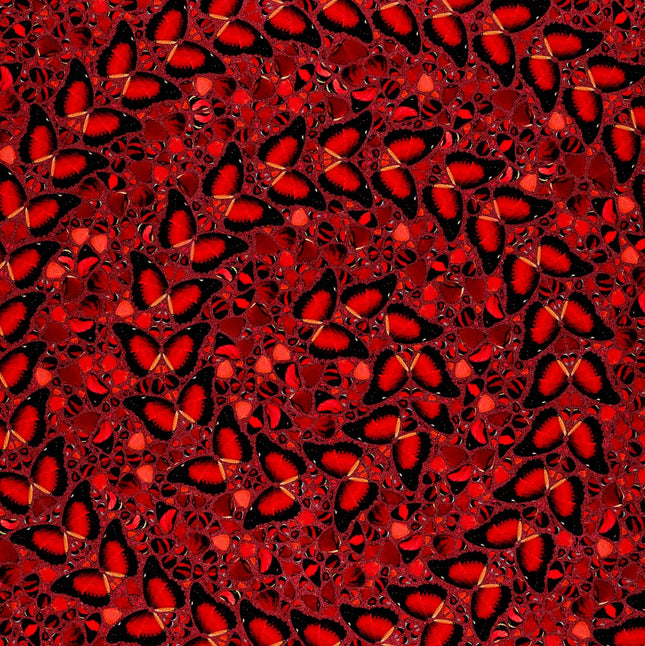
Damien Hirst The Empresses- H10-5 Taytu Betul Aluminum Giclee by Damien Hirst
The Empresses- H10-5 Taytu Betul Pop Street Artwork Limited Edition Giclee & Giltter Screenprint Print on Aluminum Sheet by Urban Graffiti Modern Artist Damien Hirst. 2022 Signed & Numbered In Verso on Label Limited Edition of 2814 Artwork Size 39.37x39.37 Giclee & Giltter Screenprint Print on Aluminum Sheet The Essence of Empress Taytu Betul in Modern Street Pop Art Taytu Betul is a captivating composition filled with a thrilling sense of velocity and motion, inspired by the formidable Ethiopian Empress. When she married Emperor Menelik in 1889, Taytu Betul (c. 1851-1918) became the Empress of Ethiopia, known for her active leadership and unwavering opposition to imperialism. She staunchly refused negotiations that would lead to the loss of Ethiopian territory. Taytu Betul also established Addis Ababa, Ethiopia's capital city, today. The artwork's focal point is the striking pairs of red and black wings that form the foundation of the composition - a spiral that originates at the center and expands outward, seemingly beyond the picture plane. The energy and movement generated in the piece reflect the enthusiasm and commitment of Taytu Betul, who led her army to protect their borders. Complementing the central wings, an array of differently sized, colored, and patterned wings create a secondary layer that accentuates the main action. Taytu Betul distinguishes itself in the series with its spirited attempt to portray butterflies in their authentic, living state. The composition evokes an aerial perspective, enabling viewers to gaze down upon the swarm of butterflies as their momentum is captured in the spiral and the dynamic unfolding of the artwork. The art world continually evolves, creating compelling narratives through bold expressions and innovative mediums. One such narrative is the "Empresses- H10-5 Taytu Betul," an extraordinary Street Pop Art and Graffiti Artwork by the renowned British artist Damien Hirst. Born in 1965 in Bristol, England, Hirst has become one of the most prominent figures in contemporary art, known for his provocative and often controversial pieces. His work on aluminum sheets using giclee and glitter screenprint techniques brings a shimmering vitality to the story of Empress Taytu Betul, a formidable figure in Ethiopian history. Empress Taytu Betul: A Historical Figure Reimagined Taytu Betul, born around 1851 and passing in 1918, was more than just royalty; she was a visionary and a warrior. As the wife of Emperor Menelik II, she ascended to become the Empress of Ethiopia in 1889. Her tenure was marked by a fierce resistance to colonial encroachment and a strategic understanding that contributed to establishing Addis Ababa, Ethiopia's vibrant capital. Hirst's artwork, limited to 2814 pieces and signed and numbered in verso on the label, celebrates her legacy in a format that transcends traditional portraiture. The size of each piece, 39.37x39.37 inches, provides a vast landscape for the visual story to unfold. The Empresses- H10-5 Taytu Betul is a testament to Hirst's ability to encapsulate the essence of a historical figure within the realms of Street Pop Art and Graffiti Artwork. The choice of medium is significant; the aluminum sheet lends a contemporary edge, while the giclee and glitter screenprint add texture and depth. In this piece, the central motif of red and black wings is not random; it symbolizes the power and grace of the empress, with the spiral starting from the center representing her influence radiating outward. This artwork is more than a static image; it's an active experience. The depiction of the wings in various sizes, colors, and patterns is reminiscent of the diversity of life and the complexity of Taytu Betul's reign. The artwork thrives on the illusion of motion, suggesting the empress's undying spirit and her relentless pursuit of Ethiopian sovereignty. Damien Hirst's work captures the viewer's imagination, inviting them to explore the layers and the historical depth embedded within the vibrant spirals of wings. The Empresses- H10-5 Taytu Betul by Damien Hirst is a sophisticated collision of history and modern art. It brings forth the spirit of a bygone era through the lens of contemporary Street Pop Art and Graffiti Artwork. This limited edition piece serves as an aesthetic artifact and a historical dialogue, connecting the past with the present and projecting the legacy of a remarkable figure through the universal language of art.
$7,146.00






